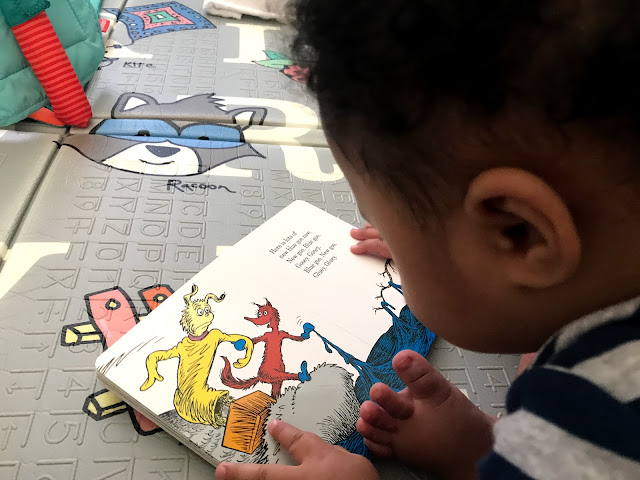Literature appreciation: Starting him young
A lot of parenting guides encourage parents to start reading to their babies as early as possible. I have always thought that it's not feasible to do so when a baby is only awake for 45 minutes. In my son's case, during that wake window, I have to fit in a lot of activities:
- diaper change (10 minutes)
- feed (15 minutes)
- tummy time and playtime (20 minutes)
By the time I was about to start reading to my son, he's already zonked out and ready for his next nap! Note that I have not done any sleep training or nap scheduling with him. We still follow a routine of eating, playing, and sleeping but not that particular order each time; it really depends on how long his naps are.
I started inserting a short segment of reading nursery rhymes in his playtime routine when his wake window lengthened to 90 minutes. If I remember correctly, he was three or four months old when we began; this was also when I was able to include a short walk around the neighbourhood in his morning routine (and he typically fell asleep during our walk).
Dr Seuss became a regular part of his library when he was in the midst of his fifth month (I had these books with me since he was three months old). I have read articles that actually advise avoiding Dr Seuss when reading for infants because infants are still getting introduced to the building blocks of language. The humour of Dr Seuss would certainly be lost on babies.
I understand where these pieces of advice are coming from: quite a number of Dr Seuss' books use words that are not part of any language and are just in the text for the phonetic quality.
Here's a lot of new goo now.
New goo. Blue goo.
Gooey. Gooey.
Blue goo. New goo.
Gluey. Gluey.
– Dr Seuss, Fox in Socks
I decided to continue because I grew up enjoying Dr Seuss' books. I don't have little board book versions of "Cat in the Hat" and "One Fish, Two Fish", though, so I introduced him to "Fox in Socks" and "Mr Brown Can Moo". I'm introducing him to other titles in his Dr Seuss library but the other books have not met the same level of enthusiasm yet.


Comments
Post a Comment
Thank you for dropping by!
Before moving on, please share your thoughts or comments about the post. :)
Thanks again!